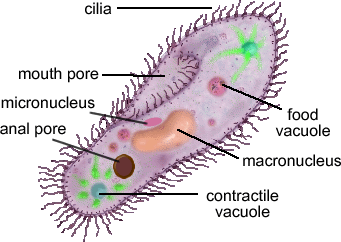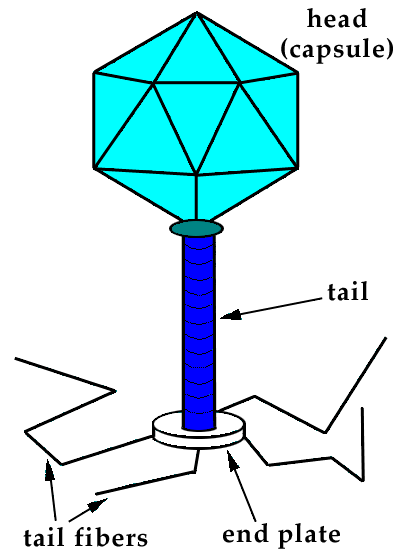Prion:
Viroids and prions are infectious agents even simpler than viruses. A prion is a protein, they appear to cause a number of degenerative brain diseases, including scrapie in sheep, the "made cow disease" and Creutzfeldt-Jacob disease in humans. A prion is a misfolded form of a protein normally present in brain cells. When the prion gets into a cell containing the normal form of the protein, the prion converts the normal protein to the prion version. Because of this we can see that prions always calls chain reactions that increase the prion number. The hypothesis of how a prion propagate is this: when a prion contacts a normal "twin" it may induce the normal protein to assume the abnormal shape. This may continue until prions go to dangerous levels such as causing cellular malfunction and soon degeneration of the brain.
Protist:
Protists are the most diverse of all eukaryotes. Most protists are unicellular. They are found whereever there is water, living as plankton, submerged bottom swellers, or inhabitants of moist soil or the body fluids of other organisms. Protists are the most nutritionally diverse, this includes photoautotrophs, heterotrophs, and mixotrophs. Some algae which is in the protist tree have life cycles with alternating multicellular haploid and diploid generations, this means that haploid gametophytes and diploid sporophytes take turns reproducing one another. . The main groups of Protistan diversity are Diplomonadida, Parabasala, Euglenozoa, Alveolata, Stramenopila, Rhodophyta, Chlorophyta, and Mycetozoa.
Bacteria:
Bacteria have a short generation span and because of this it helps them adjust to changing environments. Since bacteria has a short generation span, new mutations can affect a population's genetic variation quickly. The way a bacteria duplicates and makes new bacteria is by transformation, transduction, and conjugation. In transformation, the DNA enters the cell from the surroundings. In transduction, the bacterial DNA is carried from one cell to the other by phages. Lastly, in conjugation, it is the transfer of genetic material between bacterial cells by direct cell-to-cell contact or by a bridge-like connection between two cells.
Virus:
A virus is a small nucleic acid genome enclosed in a protein capsid and sometimes a membranous envelope. The genome that is enclosed in the capsid may be single- or double stranded DNA as well as RNA. The only way for a virus to reproduce is within a host. Viruses use enzymes, ribosomes, and small molecules of host cells to synthesize offspring viruses. For RNA viruses, there is such thing known as retroviruses, that they do is that they use the enzyme reverse transcriptase to synthesize DNA from their RNA template. The DNA can then integrate into the host genome as a proviruses. As for plant viruses, most of them are single stranded RNA viruses. Phages, a type of viruses can undergo the lytic or lysogenic cycle in order to reproduce.
SOURCES: campbell book, biologycorner.com,




No comments:
Post a Comment